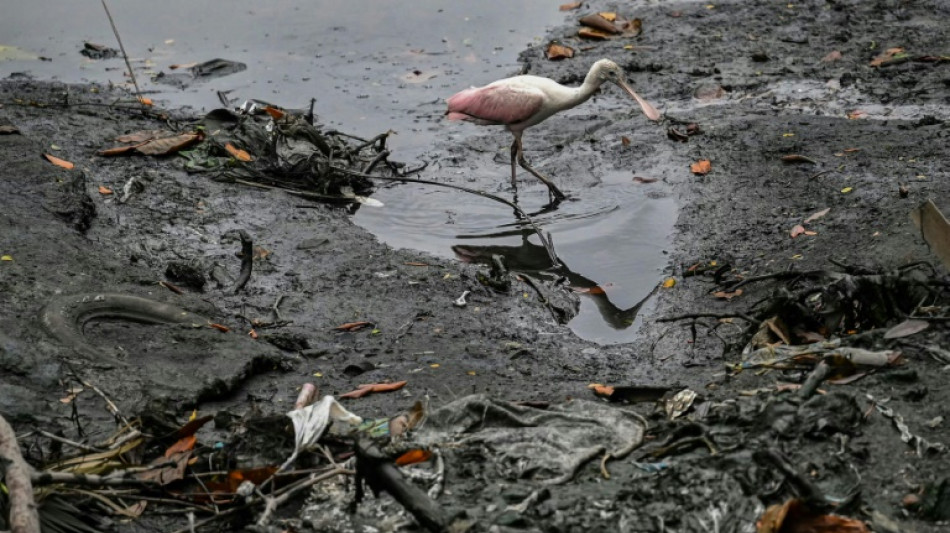
-
 'Netflix House' marks streaming giant's first theme park
'Netflix House' marks streaming giant's first theme park
-
UN warns of rough winter ahead for refugees

-
 Brazil's 'action agenda' at COP30 takes shape
Brazil's 'action agenda' at COP30 takes shape
-
Trump threatens $1 billion action as BBC apologises for edit error

-
 Sinner dominates injury-hit Auger-Aliassime in ATP Finals opener
Sinner dominates injury-hit Auger-Aliassime in ATP Finals opener
-
Trump hails Syria's 'tough' ex-jihadist president after historic talks

-
 Syria's ex-jihadist president meets Trump for historic talks
Syria's ex-jihadist president meets Trump for historic talks
-
Top US court hears case of Rastafarian whose hair was cut in prison
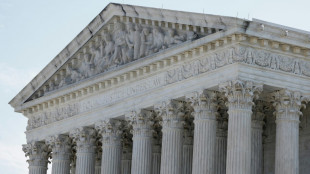
-
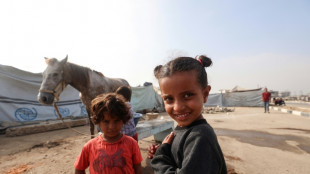 US mediator Kushner and Netanyahu discuss phase two of Gaza truce
US mediator Kushner and Netanyahu discuss phase two of Gaza truce
-
End to US government shutdown in sight as Democrats quarrel

-
 Trump threatens air traffic controllers over shutdown absences
Trump threatens air traffic controllers over shutdown absences
-
US to remove warnings from menopause hormone therapy

-
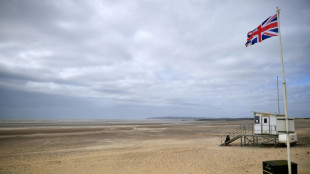 UK water firm says 'highly likely' behind plastic pellet pollution incident
UK water firm says 'highly likely' behind plastic pellet pollution incident
-
Syria's ex-jihadist president holds historic Trump talks

-
 End to record-long US government shutdown in sight
End to record-long US government shutdown in sight
-
France's ex-leader Sarkozy says after jail release 'truth will prevail'

-
 Atalanta sack coach Juric after poor start to season
Atalanta sack coach Juric after poor start to season
-
Trump threatens $1 billion action as BBC apologises for speech edit

-
 Gattuso wants 'maximum commitment' as Italy's World Cup bid on the line
Gattuso wants 'maximum commitment' as Italy's World Cup bid on the line
-
Indian capital car blast kills at least eight
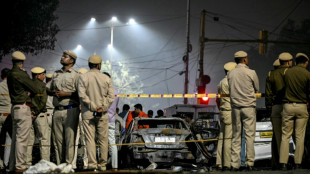
-
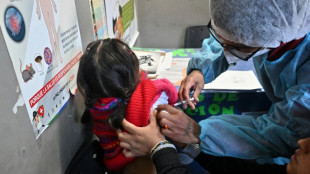 Deadly measles surge sees Canada lose eradicated status
Deadly measles surge sees Canada lose eradicated status
-
Brazil's Lula urges 'defeat' of climate deniers as COP30 opens

-
 Strangled by jihadist blockade, Malians flee their desert town
Strangled by jihadist blockade, Malians flee their desert town
-
US Supreme Court declines to hear case challenging same-sex marriage

-
 'Fired-up' Fritz sees off Musetti in ATP Finals
'Fired-up' Fritz sees off Musetti in ATP Finals
-
Injured Courtois set to miss Belgium World Cup qualifiers

-
 Bulatov, pillar of Russian contemporary art scene, dies at 92
Bulatov, pillar of Russian contemporary art scene, dies at 92
-
Fritz sees off Musetti in ATP Finals

-
 US strikes on alleged drug boats kill six more people
US strikes on alleged drug boats kill six more people
-
Sarkozy released from jail 'nightmare' pending appeal trial
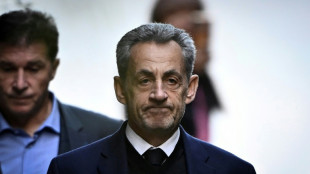
-
 COP30 has a mascot: the fiery-haired guardian of Brazil's forest
COP30 has a mascot: the fiery-haired guardian of Brazil's forest
-
The Sudanese who told the world what happened in El-Fasher

-
 Three things we learned from the Sao Paulo Grand Prix
Three things we learned from the Sao Paulo Grand Prix
-
ASC acquire majority share in Atletico Madrid

-
 Ferrari boss tells Hamilton, Leclerc to drive, not talk
Ferrari boss tells Hamilton, Leclerc to drive, not talk
-
Bank of England seeks to 'build trust' in stablecoins

-
 China suspends 'special port fees' on US vessels for one year
China suspends 'special port fees' on US vessels for one year
-
French court frees ex-president Sarkozy from jail pending appeal

-
 No link between paracetamol and autism, major review finds
No link between paracetamol and autism, major review finds
-
Typhoon Fung-wong floods Philippine towns, leaves 5 dead in its wake

-
 France's Sarkozy says prison a 'nightmare' as prosecutors seek his release
France's Sarkozy says prison a 'nightmare' as prosecutors seek his release
-
Guinness maker Diageo picks new CEO after US tariffs cloud

-
 China suspends 'special port fees' on US vessels
China suspends 'special port fees' on US vessels
-
US senators take major step toward ending record shutdown

-
 Typhoon Fung-wong leaves flooded Philippine towns in its wake
Typhoon Fung-wong leaves flooded Philippine towns in its wake
-
From Club Med to Beverly Hills: Assinie, the Ivorian Riviera

-
 The 'ordinary' Arnie? Glen Powell reboots 'The Running Man'
The 'ordinary' Arnie? Glen Powell reboots 'The Running Man'
-
Typhoon exposes centuries-old shipwreck off Vietnam port

-
 French court to decide if ex-president Sarkozy can leave jail
French court to decide if ex-president Sarkozy can leave jail
-
China lifts sanctions on US units of South Korea ship giant Hanwha


Ecuador launches floating islands to save stinky Guayaquil estuary
On the banks of the dark and murky waters of the Guayaquil estuary, volunteers trudge through mud as they slide wooden platforms.
Onboard are crucial seedlings that could save the 70-kilometer (44 mile)-long polluted artery outside Ecuador's main port city.
Environmental engineer Angela Cevallos is leading efforts to save the estuary with these "floating islands," which are embedded with red mangrove seedlings.
The plant is known for its long roots which can absorb pollutants while helping establish an aquatic ecosystem, allowing other plants and animals to thrive.
"These islands are the transportation mode and the propagules (seedlings) do the work," said Cevallos, who leads the project run by Holy Spirit University, her alma mater.
For decades, tons of rubbish, excrement and heavy metals have been dumped into the water around Guayaquil -- home to 2.8 million people.
But despite several previous conservation efforts and millions of dollars of investment, the estuary continues to be threatened by pollution.
"Guayaquil has grown at the feet of this estuary and we cannot let it die," said architect Patricio Rosero, who designed the biodegradable wooden platforms.
Volunteers carry the two-meter long platforms on their backs one by one to the water's edge.
Ten platforms are tied together using rope made from banana skins.
Wearing a long-sleeve shirt and white boots, Cevallos, 23, wades into the green mud to slowly push the platforms into place.
Each "island" is stuffed with 23 red mangrove seedlings, which within four months should form thin trunks.
"The mangrove is a noble habitat, it can be regenerated and absorb pollutants," said Cevallos.
"I will come back to test the water to see if there is less pollution."
- 1,000 times the authorized contamination -
Half a century ago, fishermen would catch snook and corvina in the estuary, while children would frolic in its natural pools.
"My father took my three siblings and myself to Puerto Liza and there he taught us to swim. The water was crystal clear and fresh," reminisced 75-year-old Lucenia Haro, a retired school teacher.
But then large scale building began, sparked by politicians seeking to win new voters.
Entire neighborhoods were built at breakneck speed, but without a connected sewage system.
Even today, the pipes that transport sewage empty directly into the estuary, where 300,000 people live along the coast, many in extreme poverty.
Between May 2019 and July 2022, almost 35,000 tons of rubbish were collected from the estuary, according to figures from the Guayaquil mayoral office.
The largest source of pollution is sewage.
"Secret connections have been closed and redirected to the sewage system," said Maria Fernanda Rumbea, head of the local environment body.
According to Cevallos's analysis, in the area where the floating islands have been placed, there is 1,000 times the authorized amount of coliform bacteria, which lives in feces and can contaminate water.
- Conservation efforts -
It is not the first time such platforms have been sent into the estuary.
In 2014, the environment ministry installed some metal platforms but they failed due to a lack of maintenance.
Earlier this year, the Higher Polytechnic School of the Coast launched an initiative to reforest the estuary with marine algae.
"We want to know whether the algae can improve the mangroves' germination rate," said Edwin Jimenez, a researcher at the university.
The Guayaquil municipality is implementing its own conservation project as well, starting with the construction of its sewage treatment plant, according to Rumbea.
When the night falls and the tide goes out, the smell is nauseating.
And yet the estuary and its vegetation continue to resist the contamination. It remains the only drainage system for rain water, thus preventing potentially catastrophic flooding during the country's rainy season.
"If it wasn't for the estuary and its smelly trees, dozens of homes and buildings would have disappeared some time ago," said Jimenez.
L.Mason--AMWN